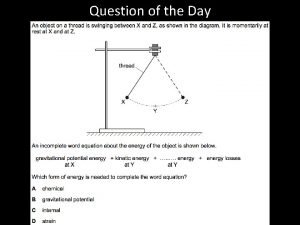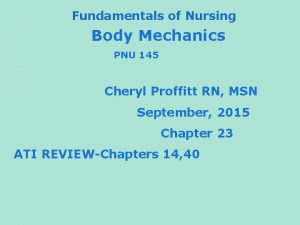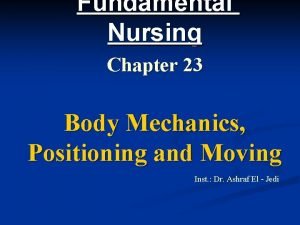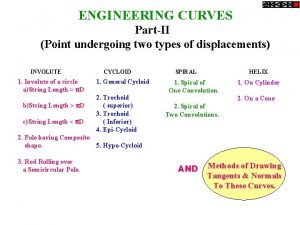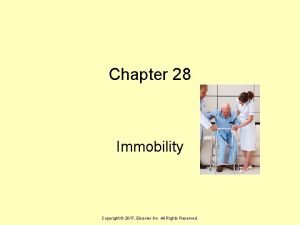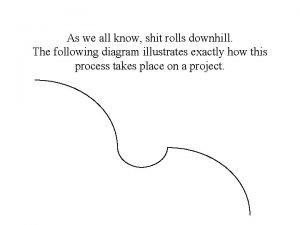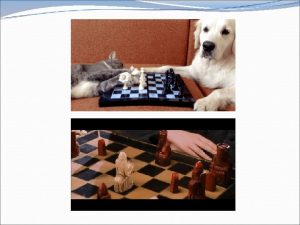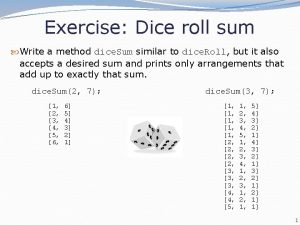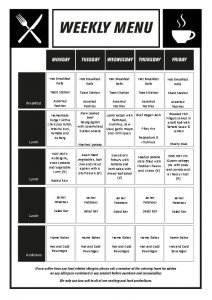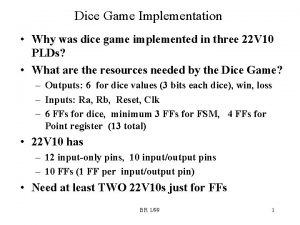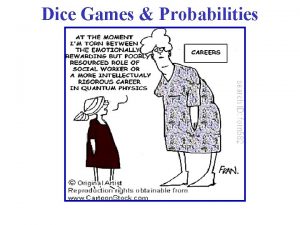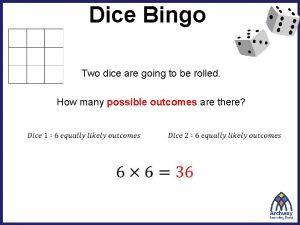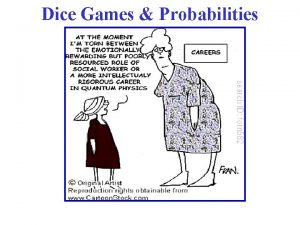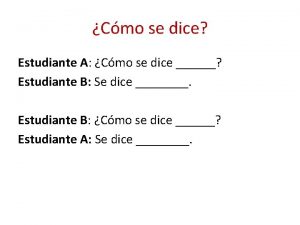2 Exercise Dice rolls Write a method dice













- Slides: 13

2

Exercise: Dice rolls Write a method dice. Roll that accepts an integer parameter representing a number of 6 -sided dice to roll, and output all possible arrangements of values that could appear on the dice. Roll(2); [1, [1, [1, [2, [2, [2, 1] 2] 3] 4] 5] 6] [3, [3, [3, [4, [4, [4, 1] 2] 3] 4] 5] 6] dice. Roll(3); [5, [5, [5, [6, [6, [6, 1] 2] 3] 4] 5] 6] [1, 1, [1, 1, [1, 2, . . . [6, 6, 1] 2] 3] 4] 5] 6] 1] 2] 4] 5] 6] 3

Examining the problem We want to generate all possible sequences of values. for (each possible first die value): for (each possible second die value): for (each possible third die value): . . . print! This is called a depth-first search How can we completely explore such a large search space? 4

A decision tree chosen available 1 1, 1 2 dice 1, 1, 1 1 die 1, 1, 1, 1 2 3 dice 1, 2 2 dice. . . 1, 1, 2 1 die. . . 1, 1, 1, 2 4 dice . . . 1, 3 2 dice. . . 1, 1, 3, 1 1 die 3 dice. . . 1, 4 2 dice 1, 4, 1 1, 1, 3, 2 1 die. . 5

9

10

Exercise: Dice roll sum Write a method dice. Sum similar to dice. Roll, but it also accepts a desired sum and prints only arrangements that add up to exactly that sum. dice. Sum(2, 7); [1, [2, [3, [4, [5, [6, 6] 5] 4] 3] 2] 1] dice. Sum(3, 7); [1, [1, [1, [2, [2, [3, [3, [4, [5, 1, 2, 3, 4, 5, 1, 2, 3, 4, 1, 2, 3, 1, 2, 1, 5] 4] 3] 2] 1] 1] 11

Consider all paths? chosen available 1 2 dice 2 1, 1 1 die 1, 2 1, 1, 1, 2 3 dice 2 dice 1 die desired sum 3 1, 1, 3 2 dice 1 die 1, 1, 4 5 4 1, 4 2 dice 1 die 1, 1, 5 5 1, 5 2 dice 6 2 dice 1 die 1, 6 1 die 1, 1, 6, 1 1, 6, 2. . . 12

Optimizations We need not visit every branch of the decision tree. Some branches are clearly not going to lead to success. We can preemptively stop, or prune, these branches. Inefficiencies in our dice sum algorithm: Sometimes the current sum is already too high. (Even rolling 1 for all remaining dice would exceed the sum. ) Sometimes the current sum is already too low. (Even rolling 6 for all remaining dice would not reach the sum. ) When finished, the code must compute the sum every time. (1+1+1 =. . . , 1+1+2 =. . . , 1+1+3 =. . . , 1+1+4 =. . . , . . . ) 13

New decision tree chosen available 1 2 dice 2 1, 1 1 die 1, 2 1, 1, 1, 2 3 dice 2 dice 1 die desired sum 3 1, 1, 3 2 dice 1 die 1, 1, 4 5 4 1, 4 2 dice 1 die 1, 1, 5 5 1, 5 2 dice 6 2 dice 1 die 1, 6 1 die 1, 1, 6, 1 1, 6, 2. . . 14

Backtracking backtracking: Finding solution(s) by trying partial solutions and then abandoning them if they are not suitable. a "brute force" algorithmic technique (tries all paths) often implemented recursively Applications: producing all permutations of a set of values parsing languages games: anagrams, crosswords, word jumbles, 8 queens combinatorics and logic programming 15

Backtracking strategies When solving a backtracking problem, ask these questions: What are the "choices" in this problem? What is the "base case"? (How do I know when I'm out of choices? ) How do I "make" a choice? Do I need to create additional variables to remember my choices? Do I need to modify the values of existing variables? How do I explore the rest of the choices? Do I need to remove the made choice from the list of choices? Once I'm done exploring, what should I do? How do I "un-make" a choice? 18

Exercise: Combinations Write a method combinations that accepts a string s and an integer k as parameters and outputs all possible k letter words that can be formed from unique letters in that string. The arrangements may be output in any order. Example: combinations("GOOGLE", 3) outputs the sequence of lines at right. To simplify the problem, you may assume that the string s contains at least k unique characters. EGL EGO ELG ELO EOG EOL GEO GLE GLO GOE GOL LEG LEO LGE LGO LOE LOG OEL OGE OGL OLE OLG 19
 How to write an exercise prescription
How to write an exercise prescription Symposium introduction
Symposium introduction Coir rolls for ponds
Coir rolls for ponds As i sat there brooding on the old
As i sat there brooding on the old Heritage roll bread
Heritage roll bread Fowler's position
Fowler's position A car on a roller coaster track launched by a huge spring
A car on a roller coaster track launched by a huge spring Chest rolls for prone position
Chest rolls for prone position Backrest comfort device
Backrest comfort device Trochanter roll comfort device
Trochanter roll comfort device Hand rolls in nursing
Hand rolls in nursing How to draw tangent and normal to cycloid
How to draw tangent and normal to cycloid Trochanter rolls
Trochanter rolls Shit flows downhill
Shit flows downhill






